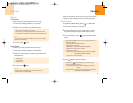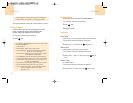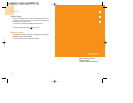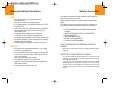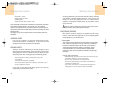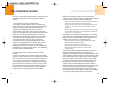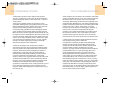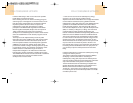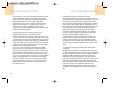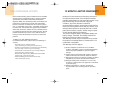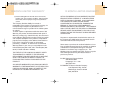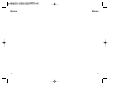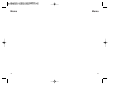
133
FDA CONSUMER UPDATE
132
FDA CONSUMER UPDATE
6. What is FDA doing to find out more about the possible
health effects of wireless phone RF?
FDA is working with the U.S. National Toxicology Program
and with groups of investigators around the world to ensure
that high priority animal studies are conducted to address
important questions about the effects of exposure to
radiofrequency energy (RF). FDA has been a leading
participant in the World Health Organization International
Electromagnetic Fields (EMF) Project since its inception in
1996. An influential result of this work has been the
development of a detailed agenda of research needs that has
driven the establishment of new research programs around
the world.
The Project has also helped develop a series of public
information documents on EMF issues. FDA and the Cellular
Telecommunications & Internet Association (CTIA) have a
formal Cooperative Research and Development Agreement
(CRADA) to do research on wireless phone safety. FDA
provides the scientific oversight, obtaining input from experts
in government, industry, and academic organizations. CTIA-
funded research is conducted through con-tracts to
independent investigators. The initial research will include
both laboratory studies and studies of wireless phone users.
The CRADA will also include a broad assessment of additional
research needs in the context of the latest research
developments around the world.
7. How can I find out how much radiofrequency energy
exposure I can get by using my wireless phone?
All phones sold in the United States must comply with Federal
Communications Commission (FCC) guidelines that limit
radiofrequency energy (RF) exposures. FCC established these
guidelines in consultation with FDA and the other federal
health and safety agencies. The FCC limit for RF exposure
from wire-less telephones is set at a Specific Absorption Rate
(SAR) of 1.6 watts per kilogram (1.6 W/kg). The FCC limit is
consistent with the safety standards developed by the
Institute of Electrical and Electronic Engineering (IEEE) and the
National Council on Radiation Protection and Measurement.
The exposure limit takes into consideration the body’s ability
to remove heat from the tissues that absorb energy from the
wireless phone and is set well below levels known to have
effects. Manufacturers of wireless phones must report the RF
expo-sure level for each model of phone to the FCC. The
FCC website (http://www.fcc.gov/oet/rfsafety) gives directions
for locating the FCC identification number on your phone so
you can find your phone’s RF exposure level in the online
listing.
8. What has FDA done to measure the radiofrequency energy
coming from wireless phones?
The Institute of Electrical and Electronic Engineers (IEEE) is
developing a technical standard for measuring the
radiofrequency energy (RF) exposure from wireless phones
and other wireless handsets with the participation and leader-
ship of FDA scientists and engineers. The standard,
“Recommended Practice for Determining the Spatial-Peak
Specific Absorption Rate (SAR) in the Human Body Due to
Wireless Communications Devices: Experimental
Techniques,” sets forth the first consistent test methodology
for measuring the rate at which RF is deposited in the heads
of wireless phone users.



